#fantasy anthropology
Text
Seven-Fold Sea Periphery: Scale Islands Archaeological Site Findings
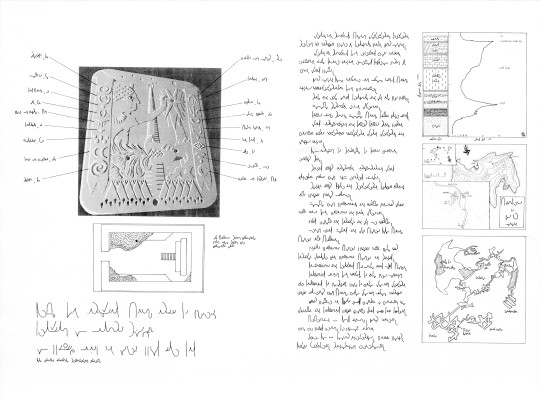
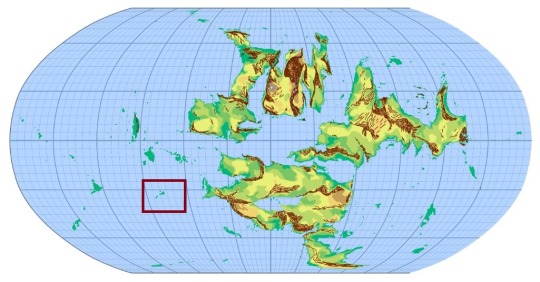
On top is the full extent of the document, closer copies and more detailed explanations to follow
Below is a world map, outlining the location of the Scale Islands with a dark red box
Located on the southeastern edge of the Seven-Fold Sea phenomena, the Scale Islands are an archipelago of space-originating islands formed of fragments broken off of the First Bright Moon, having gradually accumulated thick limestone beds in the lowlands during the last period of major sea rise.

A map of the Scale Islands
The lunar rock found in the islands has long been prized as a building material, with quarrying evident from the time of the first Hurricane-Engine City Ships, with temples constructed from the material present from the Salt region to the Crust region.


On the left, the rock type by depth of the archaeological dig, with the corresponding energy levels recorded by depth to their right.
On the right, the Island of Baltora, with an inset map showing the location of the archaeological dig.
The islands have been of note in recent years due to the discovery of an array of large-scale cave systems deep below sea level of a similar type as the long known lower reaches of the Bunker region. Evidence of human cohabitation dating back to the early Xerranian period is present in some of these caves, having remained untouched since then as opposed to the still currently inhabited caves in the Bunker region.
The particular site was discovered through drilling undertaken in a quarry in the east of the Island of Baltora.

The known extent of Baltora's Lunar cave system, with the entrance present in a small cave to the left of the largest chamber indicated by a +▵
The site of the discovered mural is indicated by a small star in the bottom roughly hexagonal segment
Preliminary examination of the inhabited sections of the cave have proven fruitful, with recent advancements in the Neon regions image capture technology having cut down energy costs to the point images can be captured without large, heavy infrastructure, and without the resulting energy output scouring all spirit/energy traces which can be useful for anthropological studies.

A sketch of the room containing the mural, with the location the image was taken indicated by a small star
The mural (10.8m Tall by 8m Wide) appears to show a draconic being and a humanoid towering above mountains and forests, with a stairway leading up to a large circular structure (presumably the moon) visually continuing the stairway up to the mural. Holes in the base of the mural appear to have been used to hold scrolls, while indents in the figures and patterns likely were meant for gems.

The photo of the mural, with annotation attempting to translate the symbols on the engraved scrolls to the left and right
A translation of the main body text from the Linear script into English has been provided below, any more specific translations will be provided by request.
Image taken during the year 927 expedition into the newly discovered macro-scale cave system located in the Scale Islands using a low energy grayscale LightCord camera isolated within a hooded pouch laced with silver to prevent energy contamination of the site.
The Scale Islands are known to originate from chunks of the first moon which fell from orbit several million years ago in planetary time, experiencing a crash consistent with stellar bodies, exhibiting little gravitational attraction and lacking mechanical failure upon impact.
The mural was found in the southern edge of the cave system, in an area identified as having human habitation. The chamber itself is notably formed of fossil space, an unusual anomaly considering the freestanding voids of the other constructed caverns in the area.
Wax placed along the left and right sides of the chamber formed out of an unknown plant based material, this wax contains Energy traces which date the last major residence of the site roughly 45000 years ago in local time. The date cannot be identified more precisely, as the material's energy decay rate is unknown.
The mural's ordered spirit is well formed, having very little intention pollution which occurs in public facing facilities. The intent of the mural's creator was preserved through the period the site was in use, suffering less than 10% pollution.
The chamber has partially collapsed near the opening on both sides, with dust stranding in the air above the rubble piles typical of a natural collapse rebound of a pocket of fossil space. Residual corrosive residue on the rock near the entrance clued in researchers to the rooms existence, appearing to have been the result of the hinges and locks of a doorway.
Small degrees of mechanical erosion of the rock in its early period is evident in the intent pollution experienced by the murals spirit, likely from cleaning the soot created by the candles off of the surface.
Chemical damage to the mural was caused by seawater intrusion into the chamber through the caves connections with the overlying limestone rock, the resulting erosion occurred in a low energy environment. This damage was not repaired until the high energy seas of the Abyss era, magnifying the spirits repair of the mural, resulting in the current murals rounded features.
Translations completed in concert with the people's of the island chain, along with the older translation work completed by the L'emmerak expedition of early y200, as the symbol base discovered in the Bunker region Lunar Caves dates back to the same region.
Direct influence by Miss Ziava-Ossan is unlikely, but cannot be ruled out during translation, none of their signature Pitch Black energy was captured by the candle-wax within the room at the time the image was taken.
Contributing Authors: Nessen Ralynoh, Ialm Chiroha, Parruh and Lakkan Collu, Geissec Harzui.
Citations: T. Iyottumaya, K. Keke'ralm, G. Vadizoa, M. Porovska, L'emmerak
#conlang#map#fantasy maps#anthropology#fantasy anthropology#fantasy map#I haven't posted in a bit so I forgor my tagging systems 😔#also a fun detail - you can probably translate the symbols on the mural from another of the conlang's I've posted about on this blog#sadly this project is slightly unfinished since I did it for an art class#so I had a specific time limit ¯\_(ツ)_/¯
21 notes
·
View notes
Text
Ough... Thinking about subterranean folk.
dnd Drow are garbage, I mean some good shit.
Mfs wearing living glow worms as jewelry. Their art being primarily textural as opposed to visual. Breeding giant mushrooms to use as wood. All their textiles are spider silk and worm silk. Fire is extremely taboo in less ventilated caves. Hnnnng. Maybe they adapted some type of echolocation... Maybe they communicate over long distances with high pitched sounds above the audible range of surface folk.
Bruh.
3 notes
·
View notes
Text
The sequel to this: ASOIAF clothing styles!

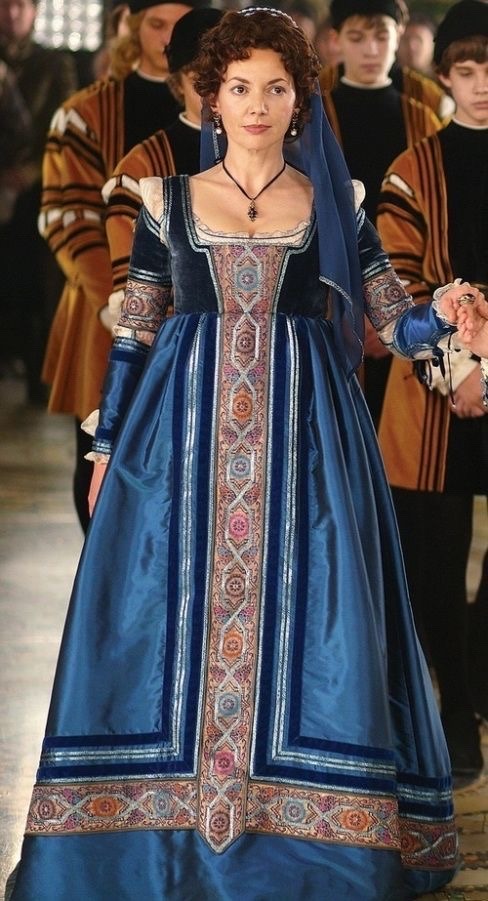
The Westerlands and The Reach def have similar styles bc they’re so close to each other and have similar climates. Like with their hair, they love showing off their wealth and opulence, so gowns are made from the finest fabrics and are heavily detailed with embroidery, puffed sleeves, and short bodices

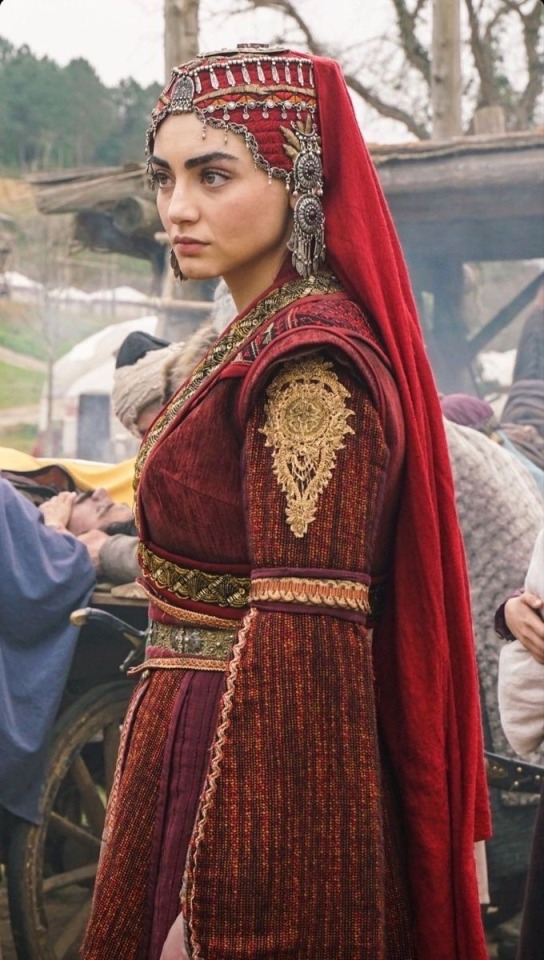
The North is so big that what a person wears definitely influenced by location (near the wall, near the vale, or near the riverlands) but in general, there are a lot of high necked, tight fitting gowns for practicality. Made of thick, heavy fabrics but with wide sleeves and lots of embroidery to make it look pretty!


Dorne is full of colors to offset the beige of the desert. They use a lot of long, loose, airy fabrics so that they can have detailed and intricate outfits but still be covered from the sun and not be overheated. Location determines how covered up they are because of the heat. Detailing is VERY big, especially golden embroidery and lining.

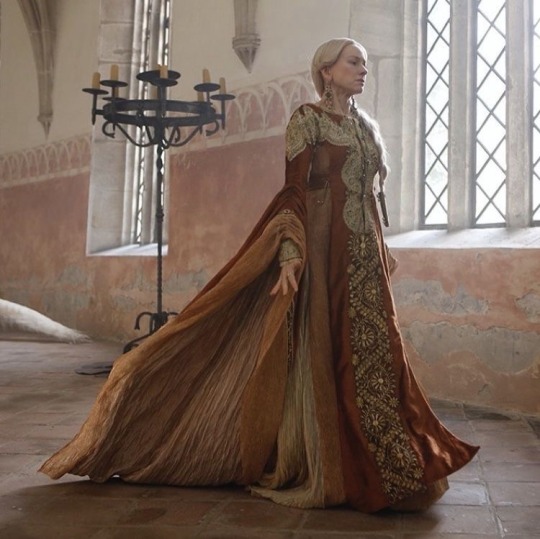
I think in the Stormlands, clothing is more durable than anything else, no wispy fabrics here.They’re fairly similar to the north, with thick and sturdy fabrics, high collars, and long sleeves to keep out the constant rain. However I think they love metal accessories and jewelry on their gowns, and put it everywhere
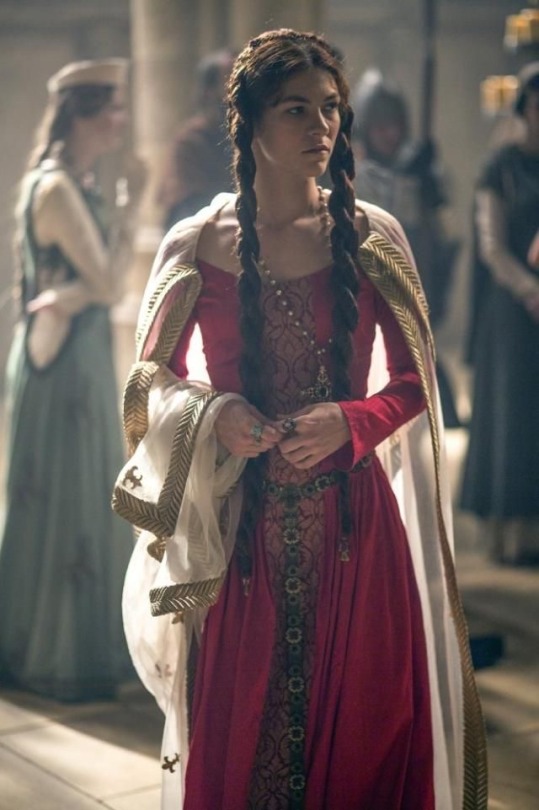
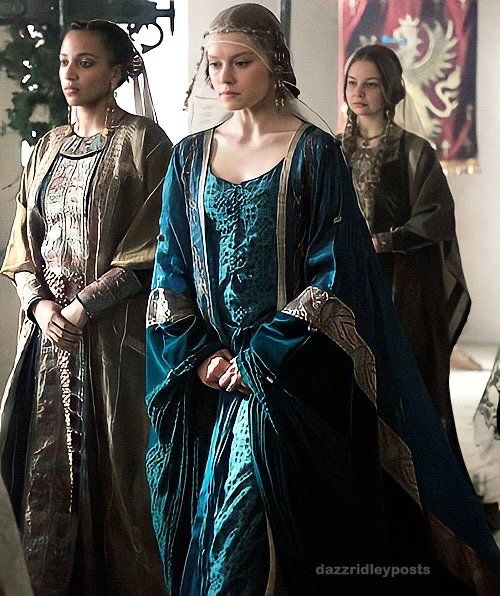
And the Riverlands have a much more “casual” silhouette than the Reach or the Vale, with a drop waist or a loose dress than only gives you figure when you wear a belt. Low necklines and long sleeves I think, because the weather is not freezing but not Dornish either. I think a lot of soft fabrics too, for those who can afford velvet and such
#asoiaf#fantasy clothing#please add ur own in the tags I want to see!!#the anthropology brain is on overload rn#but isn’t this fun!#since George wrote these places with historical inspirations in mind#why not use the clothing to diversify the cultures!!
2K notes
·
View notes
Text
as true as the jokes about “everyone wants to rewrite ninjago” are i feel like smthn people forget when complaining about the inconsistencies of the show is that…. it wasn’t planned? it’s not like most other animated shows lately - it didn’t start with a deeply fleshed out world or a meticulously designed pitch bible with grandiose plans for a long-term story or character arcs. the ninja don’t originally get their powers from heredity because they weren’t hereditary powers yet. the magic system doesn’t make sense bc they literally just made it up as they went! they go back and forth on stuff like whether non-elementals can learn spinjitzu bc it’s a collaborative piece of media made by people with vastly different levels of control over the story, the animation, the sets, etc. that varied over the course of the series. it’s totally understandable and exciting to see so many people reworking the early stuff with the lore and logic later seasons introduced but i personally feel that… if you’re doing that. you need to understand why the show is like that instead of writing it off as being bad and shitty. it was working with what it had. it’s only what it is now because of that awkward troubleshooting phase, not in spite of it
#ninjago#text✨#you’re 100% allowed to criticize the show but i keep seeing people complain about the inconsistencies about like. their parents giving them#their powers especially. like yeah cool that wasn’t a thing yet? they have different origins than the non-core elementals#because in the real world that idea hadn’t even crossed their minds yet! the original story was a more traditional fantasy narrative of#normal people rising to the occasion and *gaining* powers through their own feats. the fact that they changed it later doesn’t mean#it was necessarily bad to begin with or that it’s something that should be mocked#idk just. there’s a lot of hostility in some circles about this stuff and it makes me kinda sad. enjoy the complexity of production and how#series adapt over time. it’s part of why the show is so interesting to me#that essay i wrote had a whole bit juxtaposing the attitudes about technology in rebooted and prime empire and how they reflect greater#cultural trends between 2013 and 2021. it’s SUPER interesting and yet a lot of people only talk about it to make fun of how ‘bad’ it was :(#this isnt to say i don’t enjoy some of the retcons. the changes to their meetings with wu in s8 are genuinely really interesting! i love the#changes to cole’s backstory. i think his mom makes him in the early seasons even better! i’m just saying.. be respectful? nobody *tries* to#make a bad show. ages and ages of time and dedication were put into what ends up on your screens. it’s all human love and creation.#as goofy as it is#okay sry got all anthropology there but hm. been thinking about this for a while. apologies for being the local annoying early seasons fan
825 notes
·
View notes
Text
Worldbuilding through cultural anthropology series – #0 What is culture?
This series aims to serve as a guide for worldbuilding centered around culture and its various components, based on the theories of cultural anthropology.
To start, let's understand what culture is. Anthropologically, we define culture as the set of acquired abilities and habits shared by a group of people; the elements of this set are called cultural facts. Culture does not encompass behaviors linked to the instinctual sphere of humans.
What are the basic facts of culture?
It is holistic, meaning that each fact must be interconnected with the others. In other words, every cultural fact should have an explanation that links to another and does not contradict it.
It is dynamic, selective, and adaptive. It means it is not immutable and does not stratify over time; instead, it changes, modifies, and adapts to the surrounding environment and historical period. Some cultural facts may be lost and thus extinguish due to adaptation. Generally, cultural facts persist when repeated over time.
It is operational, meaning it includes ingrained and automated habits and behaviors, as well as worldviews (these automated cultural facts make up a habitus [what is habitus?]).
In a globalized world, it has blurred boundaries. Cultural facts can be shared, and differences between one culture and another are subtle.
It is maintained through transmission. As we mentioned, cultural facts are acquired, and transmission is the process that allows the acquisition and maintenance of cultural facts in generations, along with forms of memorization and externalization of memory (mythologies, proverbs, poetry, etc…).
Transmission can be:
Explicit: a parent directly teaching a behavior to a child or sharing a worldview.
Implicit: a child observing their mother peel potatoes in a certain way and learning to perform the same actions by imitation without explicit instruction.
When creating your cultural group, consider these fundamental traits for every aspect of its culture.
What are the cultural facts considered by anthropology nowadays?
Worldview
Cosmogonies/cosmologies
Religions
Magical systems and beliefs
Categories and forms of judgment
Values and symbols
Corporeal systems
Production systems
Settlement systems
Livelihood systems
Power systems
Social relationship systems
Forms of memorization and externalization of memory
We'll explore some of these as we continue with this series.
This blog is supported through tips here on Tumblr. If you’d like to support me, please consider giving a tip.
#wbtca#Worldbuilding through cultural anthropology#worldbuilding through cultural anthropology#writing reference#writing help#writing tips#writing advice#creative writing#worldbuilding#worldbuilding tips#fantasy worldbuilding#fantasy writing
107 notes
·
View notes
Text
There are old gods, gods older than human history. Even the vanir and the titans are young to them. The faeries only talk about them in legend, and the djinn only whisper their names in secret. They are gods so old no human remembers their name, gods of the mammoth steppe and the green Sahara, their last strings upon this earth kept alive by faded paintings on cave walls. They are the gods the nomads prayed to when dodging Saber toothed cats, and the gods that the old shammens evoked when the seas at doggerland. Some of them so old they were prayed to by the Neanderthals and Denisovans.
Their names are forgotten but they stalk the forgotten woods, still existing at the heart of the dreaming, waiting for us. They're so ancient they no longer even look like the gods of humanity, only like strange shapes, and eldritch things. And when they come to humanity now, they come as alien strangers, as things of the night, as things to be feared. These are the elder gods, those first gods that seem so alien to us, long alienated by their subjects, long changing and scheming. Perhaps they still remember us, remember what we once were. Perhaps they miss us.
#196#my thougts#worldbuilding#writing#my writing#my worldbuilding#fantasy#urban fantasy#neolithic#mythology#short fiction#short story#flash fiction#cosmic horror#cosmic bliss#eldrich horror#eldrichcore#eldrich#eldritch#eldritch horror#old gods#elder gods#anthropology#stone age
39 notes
·
View notes
Text
Dwarfs love and cherish their beards do much because countrary to popular beliefs, they grow extremely slowly and only after dwarf reaches maturity, about like a sentimeter a year, perhaps slower. As dwarfs live really long without aging, like hundreds of years, for them the beard is almost the only way to determine the age of each other somewhat precisely, as bodies and faces of a 50 years old dwarf and a 250 years old dwarf aren't all that different - Both seem to be in the prime of their life, while wisdom and experience differ drastically.
Therefore because of how slowly it grows and how important it is for proper in-species communication, cutting or losing it is completely unthinkable. Looking younger intentionally doesn't really matter when you'll stay at the same relatively young state for centuries, other hygienical concerns aren't really all that grave, and losing chunk of your beard will undo big chunk of your charm and reputability when talking with dwarfs who don't know you personally and will think you're way younger than you're actually are.
#dnd#dungeons and dragons#fantasy#fantasy biology#dwarf#dwarves#speculative biology#speculative evolution#theory#shower thoughts#anthropology
39 notes
·
View notes
Text

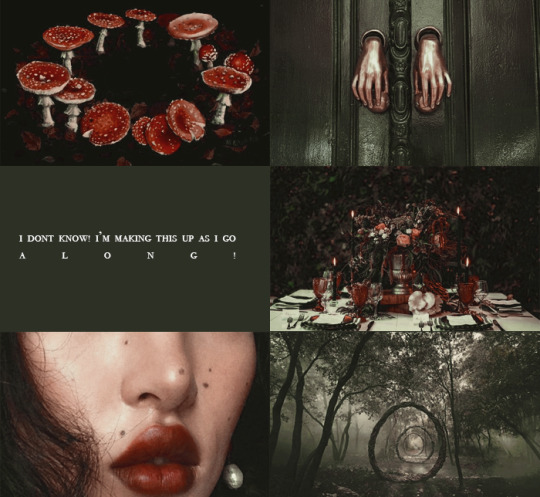
comp titles challenge: alice in wonderland meets indiana jones, suggested by @softlytowardthesun
alabama liddell is a portal anthropologist. she travels through portals to other worlds, where she brings artifacts from other worlds back to her own to be studied and hopefully returned- although that's not her job. she's a retriever, not a returner. when she travels to an unusually odd world, alabama notes the hand motifs, the circular trees, the grand meals and partes. this world is beautiful and sumptuous, but the people warn her that it doesn't take kindly to strangers taking its things. alabama thinks it should be fine to pluck just one tiny little mushroom (she is ever so curious), but the mad queen notices. she needs new hands for the world, and alabama has two. she has hungers, and alabama looks sweet.
#alice in wonderland#indiana jones#comp titles challenge#photoshop hard#i'm finding it so delightful to find similar themes in these#both indiana and alice are curious#and both can be metaphors for colonization#both genres - portal fantasy and anthropological adventure - are fun if mindless and inherently problematic#q
136 notes
·
View notes
Photo
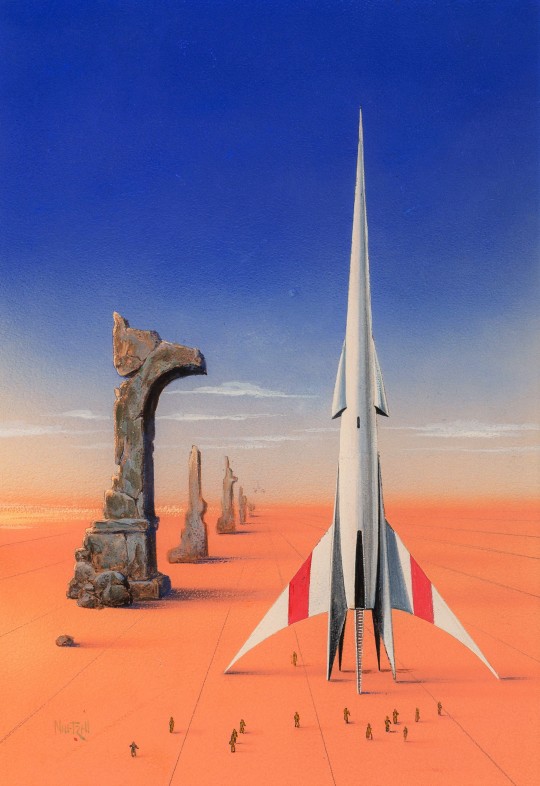
Anthropological Note - art by Albert Nuetzell (1957)
#albert nuetzell#50s sci-fi art#the magazine of fantasy and science fiction#cover art#space art#space rockets#anthropological note#1950s#1957
253 notes
·
View notes
Text
Tolkien wrote "half-elf" a couple times, and D&D was like "y'all mind if I bring back the sistema de castas"

#cosas mias#and when Tolkien wrote elves and half-elves while he was still as racist as one could expect from an Englishman born in South Africa#he was implying more of a connection to something supernatural (elves are more akin to what we could call 'fae')#it was D&D that turned them into full Races and Species with numerical stats in the style of XIX century anthropology#which speaks a lot about modern fantasy#fantasy#worldbuilding
35 notes
·
View notes
Text
Jurassic Park but we bring back extinct hominins and have an awesome world with multiple hominin species and genera coexisting.
#listen knowing how bigotted modern humans can be I know this is a fantasy#but damn I just want to be friends with a neanderthal#anthropology#early hominins#extinct hominins#paleoanthropology
315 notes
·
View notes
Text
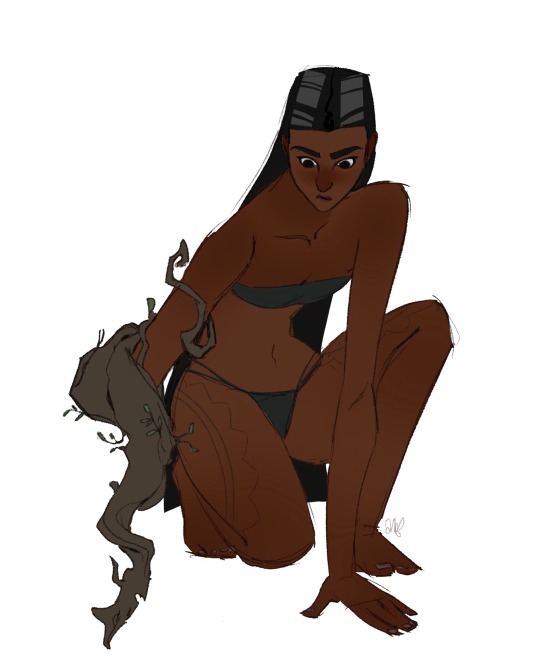
Sketchy character concept! I’ve been thinking about magical curses lately, specifically of stories where witches curse people to teach them morals or little lessons. There are so many angles to approach that situation from, but for this concept I was imagining a hunter/gatherer that got too greedy and paid the price 🪄🌳
#art#illustration#character design#fantasy#artists on tumblr#original character#original art#anthropology#folklore#folklore art#fairycore#fairy art#witchcraft#witches#witchcore#sketch#oc#oc art#commisionwork#commissions open#art commissions#character illustration#fantasy art
34 notes
·
View notes
Text
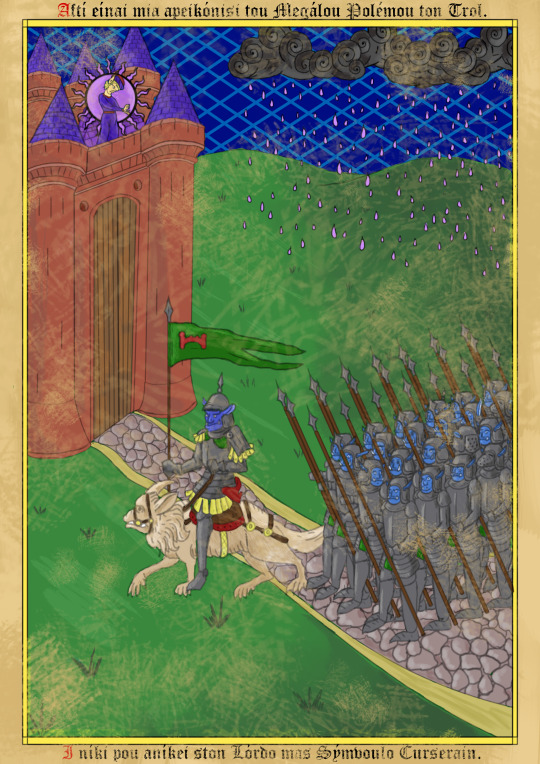
An illuminated page from The "Istora Thaumopolis" - a book penned two hundred years after the founding of Thaumopolis.
The Troll War (also known as the "War of Kisrovii Aggression", "The Kisrovii Invasion", and "The War of 1518") was an aggressive attack on Thaumopolis in early 1518, A12 by the Tsardom of Kisrovia. The Tsar had increasingly been aggravated by Thaumopolis' open borders policy at the time, which led to many Kisrovii peasants attempting to move there and diminishing the population briefly. The Tsar invented a casus belli that the City of Wizards had provoked an attack and marched north.
The defense of Thaumopolis was led by Lord-Councilor Curserain, who ingeniously fought the overwhelming numerical advantage that the Kisrovii had by relying almost entirely on Magic. Depicted above is "The Cursed Rain" (uncreatively named by its inventor) being cast by Curserain on the Kisrovii. It forced the enemy soldiers it hit to hallucinate, routing the army in a matter of hours. It is known as one of the most humiliating military defeats by a major power in recent history, and resolved by the Tsar of Kisrovia signing a defensive alliance that would ultimately result in their involvement in the Second Mechanist War several hundred years later.
#world building#worldbuilding#city of wizards#thaumopolis#artists on tumblr#urban fantasy#creative writing#fantasy#art#magic#trolls#illuminated manuscript#anthropology#history#medival#fantasy art#medieval fantasy#spells#wizard#mage#elf#fantasy character
31 notes
·
View notes
Text
First Theory
#total war#minecraft#warhammer 40k#warhammer fantasy#dungeons and dragons#anthropology#archeology#historical linguistics#fan theory
13 notes
·
View notes
Text
ppl who have read through it say that the august few: amygdala is as pretentious as it is stupid as it is vibrantly creative
and like yeah lol
i havent read it yet but i could have told u this from listening to fennah talk for five minutes
this is the kind of guy who thinks that saying he takes no stance at all on the politics of his book means that its more intelligent than if he did
hes the sort of guy who i get the impression feels that having Strong Feelings About Anything means that you are wrong simply for having strong feelings (this is based on vibes from what hes said in vids etc; he has not to my knowledge outright said anything like this im not trying to slander anyone, this is just the impression he gives off)
but he is kind of a textbook example of why “kill your darlings” isnt bad advice, and why sometimes you need someone to say “idk man this doesnt read super great”
watched a livestream with him and the guy stumbles reading through passages of his own book, not b/c hes a bad reader but b/c he Really likes using as many words as he can to say anything
anyway fennah is one of those internet creators who makes me cock my head in both admiration for that devotion and bravery in really putting his stuff out there and boldly and proudly embracing how weird it is
but also in a wince, because it really, really is frustrating how much thought he seems to put into literally everything except what it is he’s wanting to say or share with the world, and what seems to be a massive aversion to researching aspects of culture, nature, economy, environment, even parody (as he describes the book as a hyper-parody of the animal kingdom, which i can see and it does have this really over the top extremity to it that i think is fun! but needs to be handled better)
he talks about how he likes his characters to not behave how they look like they Should behave- but then at the same time elaborates that he designs his gentler characters to outwardly show traits more in line with herbivores than carnivores, like his more intense and violent characters, which is both like, textbook visual queueing and also feeds into the whole “herbivore soft weak gentle carnivore big scary mean powerful” thing which is just. massively inaccurate
anyway the entirety of fennah’s works and their history absolutely fascinate me in this really detached way and i am rolling them over in my mind and inspecting them like a neat bug
i will read the book eventually and probably enjoy it if only b/c excessively wordy hyper detailed prose is genuinely fun for me to read, and i know its going to have me rolling my eyes A Lot
#the august few#fennah#i do not have any beef with fennah#i literally do not know enough about him as a person to have beef with him#i own the book b/c i am Genuinely delighted at such a weird and maximalist world getting a massive published book#from a guy who made his weird little live action/cgi science fantasy show on youtube#ghostboyfriend would describe it as me once again doing internet anthropology#which yeah it is#im fond of it as a strange artifact of internet#and completely unrestrained and unedited fantasy can be inspiring to me in a lot of ways even when its not very good#blah blah blah many thoughts and not the best at words to talk about them but yeah
27 notes
·
View notes
Text
Worldbuilding through cultural anthropology series – #1 Race, ethnicity and groups
Let's begin with the understanding that in anthropology, race, and ethnicity are distinct concepts, although variations of them exist in numerous cultures.
Race and racism
The concept of race is entirely cultural and lacks scientific evidence supporting the establishment of objective criteria for defining one or multiple races within the human species. In fact, the entire human species has a similar DNA (Cavalli-Sforza, 2001) and genetic divergence and consequent somatic differences, due to migrations, are a relatively recent phenomenon in human history.
When world-building, it's worth considering the timing and causes of migrations, often influenced by climatic factors (such as the early Germanic invasions along the limes — borders — of the Roman Empire in the III century BC). This understanding can provide insights into the extent of somatic differences and help grasp the development and diversification of languages — which we'll delve into further later on.
Regarding the topic at hand, the idea of race is predominantly shaped by cultural factors, including prejudices, political ideologies, xenophobia, and societal norms. Therefore, if you're contemplating incorporating dynamics of racism into your fictional culture, it's essential to recognize that its conception and underlying principles vary significantly across different cultures.
An illustrative example of this contrast can be drawn from anthropological studies comparing the perspectives on race between Brazil and the United States (Marvin Harris, 1980), emphasizing our discussion within the anthropological framework:
In the United States, emphasis is placed on descent, with the concept of bloodline passing down from one generation to the next.
In Brazil, however, physical appearance holds greater significance. The Brazilian population encompasses approximately a dozen racial categories, which can encompass various traits such as eye color, hair texture, and skin tone. Moreover, these categories are fluid, with no single category being entirely distinct from the others.
Ethnicity
The old concept of ethnicity, once prevalent, defined a human group based on shared language, customs, territory, and culture. However, this concept faced criticism for its essentialist and rigid nature, prompting revision in the 20th century. The equation “culture = language = territory” implied a natural connection between culture and lineage or “race” (Barth, 1969), which is not accurate.
Contemporary anthropology views ethnicity more as an “ethnic sentiment” — a primordial feeling of belonging to a culturally, linguistically, and territorially defined group. However, this sentiment does not imply uniform desires among group members.
In essence, while ethnicity, in the anthropological sense, may not exist, ethnic identity or sentiment does.
To provide a clearer definition of ethnicity, it can be seen as a human way of perceiving both one's own and others' identities within a social context and historical period. Often, this perception emerges within social situations involving comparisons between different groups, such as in “ethnic conflicts” — which I can further elaborate on if desired, just ask.
In certain circumstances, the concept of ethnicity is propagated by external agents such as political ideologies, colonizers, or multinational corporations, rather than emerging solely from within the group itself.
And so?
So, if race and ethnicity are not considered, what criteria can I use to define the diverse groups of people in my fictional world?
Firstly, let's consider groups, which in sociology are understood as a gathering of individuals linked by a common objective or a shared self-identified identity, acknowledged by either the individuals or an external observer.
In line with the scale, ranging from largest to smallest, we can consider (I'm simplifying greatly):
Cultural groups: when crafting a fictional culture, defining the different groups of individuals involved becomes essential. These groups consist of people who share learned behaviors and beliefs. They can manifest within a nation, state, or continent. Later, we'll delve into the distinctions between hegemonic culture and subordinate culture.
Primary groups: these are small communities, often based on domestic and kinship ties. Examples range from «nomadic hunter bands in the Bolivian rainforest to medieval English or Swedish villages […] Sudanese cattle herding communities […] Persian shepherd tribes […] and present-day hamlets in Provence or Missouri» (Redfield, 1956).
Domestic and kinship groups: going deeper, we encounter domestic and kinship units, where the former may encompass the latter. These are collections of individuals, some related, who live together and cooperate in managing resources crucial for their physical survival and emotional fulfillment.
This hierarchy offers layers for different cultures, with intersecting boundaries and varying flexibility. Alternatively, one could focus on just one or two levels, depending on the story scope.
Exploring different types of boundaries
It's important to note that there are other types of groups, which intersect with those previously mentioned, particularly 'social' groups (e.g., castes in India, Marxist social classes, etc.) — here, we are referring to social stratification.
Building on the anthropological axiom that in environments marked by heightened competition and conflict, where human interactions are more frequent, boundaries tend to multiply. Groups essentially arise from the delineation of boundaries, with appearance and distinction serving as complementary factors.
The distinction between “us” and “them” can manifest in different ways within simple or complex societies (as per anthropological definitions):
Simple societies (with lower levels of social stratification) may simply exclude the “other” or include both “us” and “them” reciprocally.
Complex societies (with higher levels of social stratification) tend to internalize this distinction within the same social framework (e.g., Indian castes, Marxist social classes, Australian totemism).
We will discuss social stratification further later on.
This blog is supported through tips here on Tumblr. If you’d like to support me, please consider giving a tip.
#worldbuilding through cultural anthropology#writing advice#writing help#writing reference#writing tips#wbtca#creative writing#worldbuilding tips#fantasy worldbuilding#worldbuilding#fantasy writing
63 notes
·
View notes